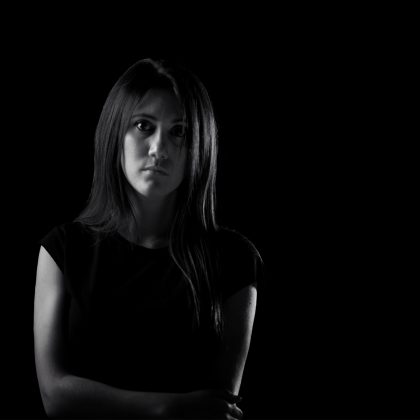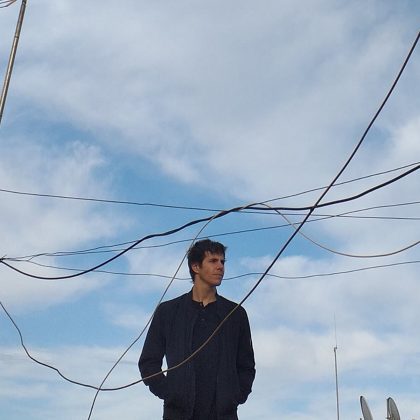Ricardo Villalobos “Easy Lee”
The birth of our underground brand Factory 93 not only brought on an adrenaline rush reminiscent of the renegade warehouse era of raving—on which Insomniac was founded—but it also had us thinking back to all the people, places and parties that made this whole operation possible. And with that came a burning desire to crack open our collection and dust off the classic records we couldn’t live without. Through our From the Crate series, we’ll be breaking out both seminal and obscure cuts alike, imparting some knowledge in the process.
In a 2004 cover story in URB Magazine about the Berlin techno scene, the author (a much younger version of yours truly) describes a party where fresh-off-Lufthansa expat Richie Hawtin and the newly crowned prince of minimal Ricardo Villalobos played a 10-hour back-to-back Sunday afternoon set at what was effectively a glorified loft party named Beat Street. In a scene I described as “melting,” one clear moment still managed to stand out—when a then-local DJ and vocalist named Cassy began to sing the refrain from Villalobos’ recently pressed underground hit, “Easy Lee,” to a crammed dancefloor of no more than 200 revelers well into their second (and third, and fourth) winds.
“Within a few bars, Hawtin had sampled the live vocal and looped it into an effects-laden mantra while Villalobos quickly culled his own set of massaging beats off another laptop,” I wrote at the time. “There, in the sweltering heat of the small dance room, a new remix was born.”
Looking back, that afternoon foretold much in the way techno music would evolve over the next 10 years, creating an almost visible demarcation between what had come before—high-octane ‘90s raving and its early millennial backlash (i.e., electroclash)—and the first strides toward something groovier that is today’s mid-tempo chart-topping techno and house. And “Easy Lee,” with its processed vocal hook and stripped-back percussive sway, caught the mood perfectly.
“When we first came to Berlin, we were playing all these weird, obscure locations, not main clubs,” Hawtin colleague Marc Houle told Resident Advisor in 2011. “You’d have to look up the address, go to an abandoned building, like with the Beat Street parties.”
For all the formidable starpower DJs like Villalobos and Hawtin now command, the Beat Street era in Berlin was, in comparison, a modest affair. But it was important in a way—if not as prophetic as an early Ramones gig at CBGB or a Bronx park party with DJ Kool Herc, then at least prescient like a late-‘80s Fugazi show (or for that matter, one of LCD Soundsystem’s first performances that were happening in London around the same time as Beat Street).
Berlin’s scene itself was going through a rebirth in 2004. Following the explosion of techno that accompanied the fall of the Berlin Wall (which had swelled to an astonishing 1.5 million revelers who swarmed the city for Love Parade at its 1997 peak), the mass cultural phenomenon had died down. Clubs like Tresor, founded in 1991 and still in its original location, maintained a level of continuity with the past. But most of the other major venues throughout Germany—including E-Werk (Berlin), Omen (Frankfurt), Dorian Gray (the Frankfurt airport!), Stammheim (Kassel), and Ultraschall (Munich)—had all closed.
New venues opened in Berlin, including Bar 25 and Club Der Visionaire, with endless operating hours (Friday through Monday, without close) and semi-open-air floorplans that necessitated a new sound that functioned on the less-than-thunderous PA systems. The style, tagged minimal, didn’t rely on bottom-heavy funk or pummeling four-four fury. Rather, it was built from lilting clicks and pops, assembled to soundtrack a perpetual state of comedown. Just enough groove to keep you going, but nothing too exhausting.
In his seminal book on Berlin techno in the ‘00s, Lost and Sound, Tobias Rapp described minimal techno as “not particularly loud—a sound which tends towards uniformity anyways, and this is accentuated by the lack of volume. Minimal doesn’t build to climaxes, it foregoes any dramatic tension. It’s music which is simply there. You latch on to the beat for a while, get on the dancefloor, then go away again. Lots of people also talk while they’re dancing, although this dancing would be better described as bopping along.”
By that standard, “Easy Lee” was an absolute anthem—a song you could sing along to (or at least pretend to know some of the words). You might even find yourself humming it days after the session had ended. To say the tune elevated minimal might sound like an unfair judgment against music intended to be functional rather than emotive, but it’s easy to understand the latter’s appeal amid hour upon hour of barely discernible tracks.
Beat Street itself was a metamorphic phase between two Berlin clubbing institutions. In January of 2003, the original Ostgut club closed to make way for the new O2 Arena (exactly the type of gentrification that helped usher the low-volume minimal style into being). The relocated Ostgut would be famously replaced by Berghain, which would host its first Panorama Bar parties 22 months later, in October of 2004. During this lull, many of the Ostgut regulars made Beat Street a roaming home. Stepping through the door of the abandoned apartment building was where I got my first look at infamous doorman Sven Marquardt’s pierced and tattooed face. Later that day, there would be an incident where I was almost removed from the party by a woman I swear was the same lady I would become friendly with while she worked Berghain’s ticket counter a decade later.
There’s no point in reasserting Berghain’s status as the most important techno club of the past decade. Enough has been written about the beloved and notorious institution. Almost as much has been said about Villalobos, whose reputation as an inconsistent, if occasionally brilliant, DJ precedes him at every gig (and sporadic social media maelstrom that follows each failed set). Less discussed is his discography, which has only grown more experimental and expansive since “Easy Lee” made him techno’s top contender for a season or two.
If you’re looking to reflect on minimal techno’s significant mid-‘00s impact and identify the shift that set the underground on the path toward its post-millennial milieu—or if you just want to hear a sublime piece of electronic music—you’d do well to sit back, put on some headphones, and melt into the minimal mastery that unfurls over “Easy Lee’s” 10-minute running time.





